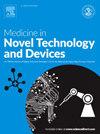冠心病患者家庭运动康复的有效性、安全性和依从性:一项系统综述
Q3 Medicine
引用次数: 0
摘要
运动康复在冠心病家庭康复中具有重要意义。然而,目前还没有一个综合的模型来评估家庭运动康复的有效性、安全性和依从性。本研究旨在综合和评价冠心病患者家庭运动康复的有效性、安全性和依从性的证据。检索自数据库建立之初至2024年3月1日的中英文数据库,用于HBCR和exercise。共有26项研究符合纳入标准。评价运动康复效果的主要指标有:峰值摄氧量、代谢当量、6分钟步行试验距离、生活质量。评价运动康复安全性的主要指标有:再住院率、死亡率。有氧运动能提高峰值摄氧量,且安全性较好。评估依从性的主要指标包括依从性培训课程的数量和持续时间以及完成培训的百分比。基于这些指标,建立了一个综合的模型来评估家庭运动康复的有效性、安全性和依从性。此外,提高效率需要高强度的有氧运动。确保安全的关键因素是制定精确和个性化的运动处方。增强依从性的一个重要趋势是智能可穿戴技术的集成应用。未来,以家庭为基础的运动康复将朝着个性化精准化、更安全、更有效的方向发展。本文章由计算机程序翻译,如有差异,请以英文原文为准。
Effectiveness, safety and adherence of home-based exercise rehabilitation in patients with coronary heart disease patients: A systematic review
Exercise rehabilitation is important in the home-based rehabilitation of coronary heart disease. However, a comprehensive model to assess the effectiveness, safety, and adherence of home exercise rehabilitation has not yet been established. This study aimed to synthesize and evaluate the evidence on the effectiveness, safety, and adherence of home-based exercise rehabilitation for patients with coronary heart disease. English and Chinese databases were retrieved from the inception of the database to March 1 in 2024 for HBCR and exercise. A total of 26 studies met the inclusion criteria. The main indicators to assess the effectiveness of exercise rehabilitation include: peak oxygen uptake, metabolic equivalents, 6-min walk test distance, and quality of life. The main indicators to assess the safety of exercise rehabilitation include: re-hospitalization rate, and mortality. Aerobic exercise can increase peak oxygen uptake with better safety. The main indicators for assessing adherence include the number and duration of adherent training sessions and the percentage of training completed. A comprehensive model to assess the effectiveness, safety, and adherence of home exercise rehabilitation has been established based on these indicators. Furthermore, enhancing the effectiveness necessitates high-intensity aerobic exercise. The key element ensuring the safety is the development of precise and personalized exercise prescriptions. An important trend in enhancing adherence is the integrated application of intelligent wearable technology. In the future, the home-based exercise rehabilitation will evolve towards individual precision, greater safety, and higher effectiveness.
求助全文
通过发布文献求助,成功后即可免费获取论文全文。
去求助
来源期刊

Medicine in Novel Technology and Devices
Medicine-Medicine (miscellaneous)
CiteScore
3.00
自引率
0.00%
发文量
74
审稿时长
64 days
 求助内容:
求助内容: 应助结果提醒方式:
应助结果提醒方式:


